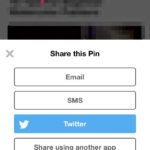Many photographers enjoy the flexibility of editing photos on their iPad using Lightroom, but when it comes to integrating these edits into their main workflow on Lightroom Classic on a PC, things can get a bit tricky. While Adobe’s cloud ecosystem is designed for seamless syncing, sometimes you might prefer a local transfer method, especially if you are managing storage or working offline. This guide will walk you through a workaround to get your Lightroom iPad photos, with all your edits, into Lightroom Classic on your PC without relying solely on cloud synchronization.
The key to this process is using the “Export As” function in Lightroom on iPad to create DNG copies of your edited raw files. DNG is crucial because it preserves your raw image data along with the edits you’ve made in Lightroom iPad. If you were to export as “Original,” you would only get the unedited raw file. Other export options like JPEG will also not retain the raw data.
To initiate the transfer, you’ll need to use the iOS Files app. This app allows Lightroom iPad to export files to various locations, including external drives connected to your iPad or even file shares on your PC if you have set them up. Here’s how you can do it:
-
Select Photos for Export in Lightroom iPad: Open Lightroom on your iPad and choose the photos you want to transfer to Lightroom Classic.
-
Choose “Export As”: Tap the Share icon, and from the options, select “Export As.” It’s important to specifically choose “Export As” and not other export or share options, as these might convert your files to JPEG and not offer the DNG option.
-
Select DNG Format: In the Export As settings, ensure you select DNG as the file format. This guarantees that your raw data and Lightroom edits are included in the exported file.
-
Choose Export Location via Files App: After selecting DNG, Lightroom will prompt you to choose an export location. Select “Files” to open the iOS Files app interface.
-
Export to PC via Files App: Within the Files app, you can navigate to your connected external drive or, if configured, to your PC’s shared folder. Choose your desired folder on your PC as the export destination. This step assumes you have already set up file sharing between your iPad and PC, or have an external drive accessible by both.
-
Import into Lightroom Classic on PC: Once the export is complete, go to your PC and open Lightroom Classic. Use the Import function to navigate to the folder where you exported the DNG files. Import these DNG files into your Lightroom Classic catalog.
Managing Cloud Sync and Storage:
If your primary reason for this local transfer is to manage your Adobe cloud storage, consider disabling cloud sync in Lightroom iPad before importing new raw images. This will prevent Lightroom iPad from automatically uploading your raw files to the cloud and consuming your storage quota. Keep your raw images locally on your iPad while you are editing.
After you have successfully exported DNG copies to your PC and imported them into Lightroom Classic, you can then free up space on your iPad. To do this effectively:
- Delete from All Photos: In Lightroom iPad, delete the photos you’ve transferred from the “All Photos” view.
- Delete from Deleted Album: Immediately after, go to the “Deleted” album in Lightroom iPad and delete them permanently from there as well. This ensures Lightroom iPad does not attempt to re-upload these files to the cloud when you re-enable sync.
- Re-enable Cloud Sync (Optional): If you wish to use cloud sync for future projects, you can now re-enable it in Lightroom iPad.
Important Considerations and Testing:
This workflow is a useful workaround, but it’s essential to understand that it’s not an officially streamlined or heavily documented feature. It relies on the functionalities of Lightroom iPad, the iOS Files app, and your file sharing setup. Therefore, it’s wise to test this process thoroughly before relying on it for critical workflows, especially before or during important photography trips.
Specifically, before relying on this method in the field:
- Test DNG Export and Import: Import and edit a few raw files in Lightroom iPad with cloud sync off. Wait a day or two, then try exporting them as DNG to your PC using the Files app method and import into Lightroom Classic, verifying that your edits are preserved.
- Check for Glitches: Be aware that users have occasionally reported issues with exporting as Original or DNG in Lightroom iPad. While it generally works, occasional glitches can occur.
By understanding these steps and potential limitations, you can effectively use this method to transfer your Lightroom iPad photos to Lightroom Classic on your PC, especially when you need a local workflow or want to manage your cloud storage usage.
